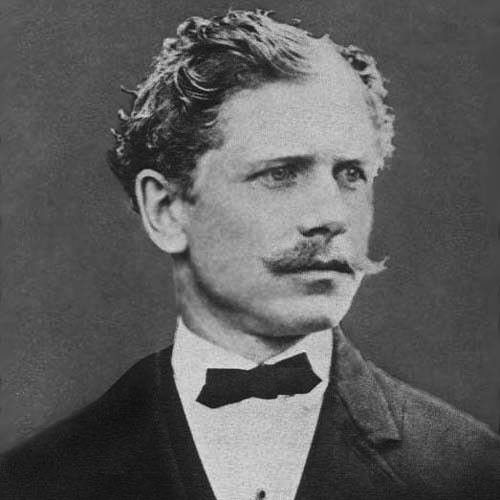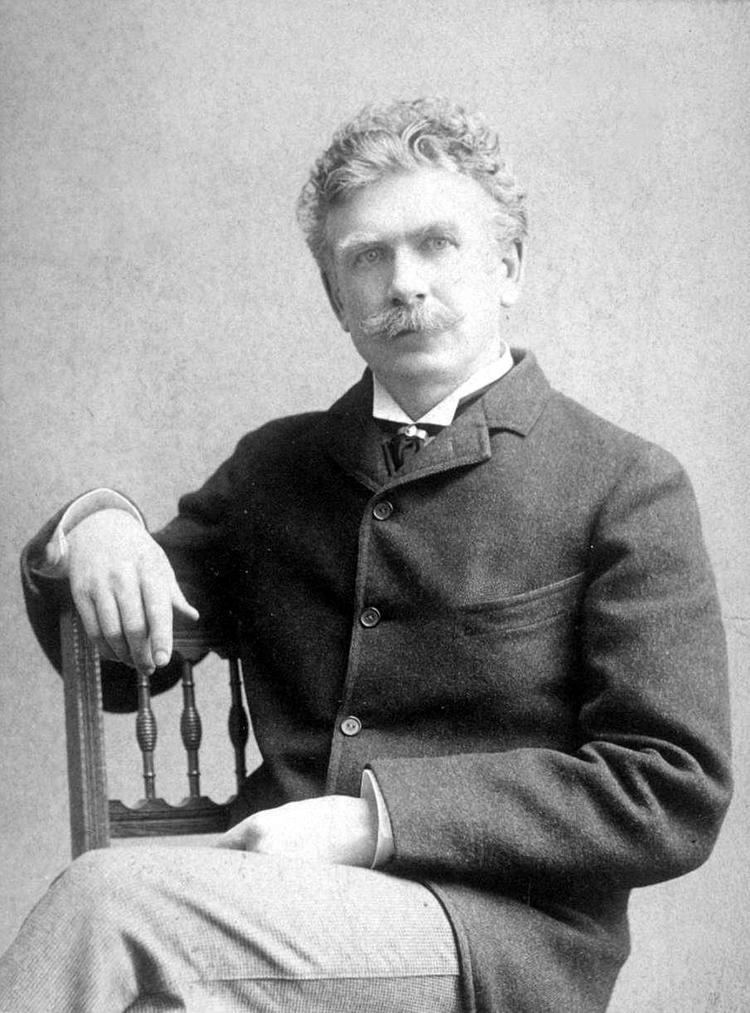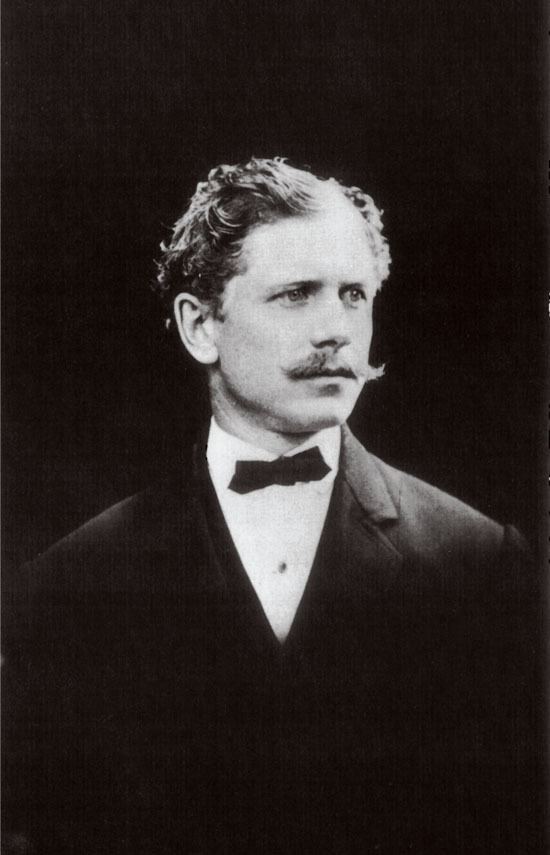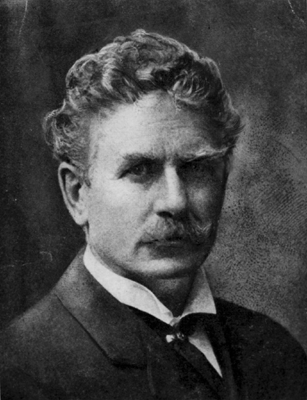Occupation Journalist · Writer Role Journalist Name Ambrose Bierce | Genre Satire Died 1914, Mexico | |
 | ||
Born Ambrose Gwinnett BierceJune 24, 1842Meigs County, Ohio, United States ( 1842-06-24 ) Notable works "An Inhabitant of Carcosa""Chickamauga""An Occurrence at Owl Creek Bridge""The Damned Thing"The Devil's Dictionary Spouse Mary Ellen "Mollie" Day (25 December 1871 – 1904) (divorced) 3 children Children Day (1872–1889), Leigh (1874–1901), Helen (1875–1940) Siblings Almeda Bierce, Ann Bierce, Adelia Bierce Books The Devil's Dictionary, An Occurrence at Owl Cr, Can Such Things Be?, Tales of Soldiers and Civili, The Damned Thing Similar People Edgar Allan Poe, H P Lovecraft, Robert Louis Stevenson, Mark Twain, Algernon Blackwood | ||
Ambrose Bierce Quotes
Ambrose Gwinnett Bierce (June 24, 1842 – circa 1914) was an American Civil War soldier, wit, and writer.
Contents
- Ambrose Bierce Quotes
- The damned thing ambrose bierce audiobook
- Early life
- Military career
- Personal life
- Journalism
- Railroad refinancing bill
- McKinley accusation
- Literary works
- Disappearance
- Legacy and influence
- Published during Bierces lifetime
- Published posthumously
- Short stories
- References

Bierce's book The Devil's Dictionary was named as one of "The 100 Greatest Masterpieces of American Literature" by the American Revolution Bicentennial Administration. His story An Occurrence at Owl Creek Bridge has been described as "one of the most famous and frequently anthologized stories in American literature"; and his book Tales of Soldiers and Civilians (also published as In the Midst of Life) was named by the Grolier Club as one of the 100 most influential American books printed before 1900.

A prolific and versatile writer, Bierce was regarded as one of the most influential journalists in the United States. For his horror writing, Michael Dirda ranked him alongside Edgar Allan Poe and H.P. Lovecraft.” as a pioneering writer of realist fiction. His war stories influenced Stephen Crane, Ernest Hemingway, and others, and he was considered an influential and feared literary critic. In recent decades Bierce has gained wider respect as a fabulist and for his poetry.

In December 1913, Bierce traveled to Chihuahua, Mexico, to gain first-hand experience of the Mexican Revolution. He disappeared, and was rumored to be traveling with rebel troops. He was never seen again.

The damned thing ambrose bierce audiobook
Early life
Bierce was born in a log cabin at Horse Cave Creek in Meigs County, Ohio, on June 24, 1842, to Marcus Aurelius Bierce (1799–1876) and Laura Sherwood Bierce. He was of entirely English ancestry, all of which came to North America between 1620 and 1640 as part of the Great Puritan Migration. He often wrote critically of both "Puritan values" and people who "made a fuss" about geneaology. He was the tenth of thirteen children, whose father gave all names beginning with the letter "A": in order of birth, the Bierce siblings were Abigail, Amelia, Ann, Addison, Aurelius, Augustus, Almeda, Andrew, Albert, and Ambrose. His mother was a descendant of William Bradford.
His parents were a poor but literary couple who instilled in him a deep love for books and writing. Bierce grew up in Kosciusko County, Indiana, attending high school at the county seat, Warsaw.
He left home at 15 to become a printer's devil at a small abolitionist Ohio newspaper, the Northern Indianan.
Military career
At the outset of the American Civil War, Bierce enlisted in the Union Army's 9th Indiana Infantry. He participated in the operations in Western Virginia (1861), was present at the Battle of Philippi (the first organized land action of the war), and received newspaper attention for his daring rescue, under fire, of a gravely wounded comrade at the Battle of Rich Mountain. In February 1862 he was commissioned a first lieutenant, and served on the staff of General William Babcock Hazen as a topographical engineer, making maps of likely battlefields.
Bierce fought at the Battle of Shiloh (April 1862), a terrifying experience that became a source for several short stories and the memoir "What I Saw of Shiloh". As a staff officer, Bierce became known to leading generals such as George H. Thomas and Oliver O. Howard, both of whom supported his application for admission to West Point in May 1864. General Hazen believed Bierce would graduate from the military academy "with distinction" and William T. Sherman also endorsed the application for admission even though stating he had no personal acquaintance with Bierce. In June 1864, Bierce sustained a serious head wound at the Battle of Kennesaw Mountain, and spent the rest of the summer on furlough, returning to active duty in September. He was discharged from the army in January 1865.
His military career resumed, however, in mid-1866, when he joined General Hazen as part of an expedition to inspect military outposts across the Great Plains. The expedition traveled by horseback and wagon from Omaha, Nebraska, arriving toward year's end in San Francisco, California.
Personal life
Bierce married Mary Ellen "Mollie" Day on December 25, 1871. They had three children: sons Day (1872–1889) and Leigh (1874–1901) and daughter Helen (1875–1940). Both of Bierce's sons died before he did. Day committed suicide after a romantic rejection, and Leigh died of pneumonia related to alcoholism. Bierce separated from his wife in 1888, after discovering compromising letters to her from an admirer. They divorced in 1904. Mollie Day Bierce died the following year.
Bierce was an avowed agnostic. He suffered from lifelong asthma, as well as complications from his war wounds.
Journalism
In San Francisco, Bierce was awarded the rank of brevet major before resigning from the Army. He remained in San Francisco for many years, eventually becoming famous as a contributor or editor of a number of local newspapers and periodicals, including The San Francisco News Letter, The Argonaut, the Overland Monthly, The Californian and The Wasp. A selection of his crime reporting from The San Francisco News Letter was included in The Library of America anthology True Crime.
Bierce lived and wrote in England from 1872 to 1875, contributing to Fun magazine. His first book, The Fiend's Delight, a compilation of his articles, was published in London in 1873 by John Camden Hotten under the pseudonym "Dod Grile".
Returning to the United States, he again took up residence in San Francisco. From 1879 to 1880, he traveled to Rockerville and Deadwood in the Dakota Territory, to try his hand as local manager for a New York mining company. When the company failed he returned to San Francisco and resumed his career in journalism.
From January 1, 1881 until September 11, 1885 he was editor of The Wasp magazine, in which he began a column titled "Prattle". He also became one of the first regular columnists and editorialists on William Randolph Hearst's newspaper, The San Francisco Examiner, eventually becoming one of the most prominent and influential writers and journalists of the West Coast. He remained associated with Hearst Newspapers until 1909.
Railroad refinancing bill
The Union Pacific and Central Pacific railroad companies had received large, low-interest loans from the U.S. government to build the First Transcontinental Railroad. Central Pacific executive Collis P. Huntington persuaded a friendly member of Congress to introduce a bill excusing the companies from repaying the loans, amounting to $130 million (worth $3.74 billion today).
In January 1896 Hearst dispatched Bierce to Washington, D.C. to foil this attempt. The essence of the plot was secrecy; the railroads' advocates hoped to get the bill through Congress without any public notice or hearings. When the angered Huntington confronted Bierce on the steps of the Capitol and told Bierce to name his price, Bierce's answer ended up in newspapers nationwide: "My price is one hundred thirty million dollars. If, when you are ready to pay, I happen to be out of town, you may hand it over to my friend, the Treasurer of the United States."
Bierce's coverage and diatribes on the subject aroused such public wrath that the bill was defeated. Bierce returned to California in November.
McKinley accusation
Because of his penchant for biting social criticism and satire, Bierce's long newspaper career was often steeped in controversy. On several occasions his columns stirred up a storm of hostile reaction, which created difficulties for Hearst. One of the most notable of these incidents occurred following the assassination of President William McKinley, when Hearst's opponents turned a poem Bierce had written about the assassination of Governor William Goebel of Kentucky in 1900 into a cause célèbre.
Bierce meant his poem to express a national mood of dismay and fear, but after McKinley was shot in 1901, it seemed to foreshadow the crime:
Hearst was thereby accused by rival newspapers—and by then-Secretary of State Elihu Root—of having called for McKinley's assassination. Despite a national uproar that ended his ambitions for the presidency (and even his membership in the Bohemian Club), Hearst kept employing Bierce.
Literary works
During his lifetime, Bierce was better known as a journalist than as a fiction writer. His most popular stories were written in rapid succession between 1888 and 1891, in what was characterized as "a tremendous burst of consummate art". Bierce's works often highlight the inscrutability of the universe and the absurdity of death.
Bierce wrote realistically of the terrible things he had seen in the war in such stories as "An Occurrence at Owl Creek Bridge", "A Horseman in the Sky", "One of the Missing", and "Chickamauga". His grimly realistic cycle of 25 war stories has been called "the greatest anti-war document in American literature".
According to Milton Subotsky, Bierce helped pioneer the psychological horror story. In addition to his ghost and war stories, he also published several volumes of poetry. His Fantastic Fables anticipated the ironic style of grotesquerie that became a more common genre in the 20th century.
One of Bierce's most famous works is his much-quoted The Devil's Dictionary, originally an occasional newspaper item, first published in book form in 1906 as The Cynic's Word Book. Described as "howlingly funny", it consists of satirical definitions of English words which lampoon cant and political double-talk. Bierce edited the twelve volumes of The Collected Works of Ambrose Bierce, which were published from 1909 to 1912. The seventh volume consists solely of The Devil's Dictionary.
Bierce has been criticized by his contemporaries and later scholars for deliberately pursuing improbability and for his penchant toward "trick endings". In his later stories, apparently under the influence of Maupassant, Bierce "dedicated himself to shocking the audience", as if his purpose was "to attack the reader's smug intellectual security".
Bierce's bias towards Naturalism has also been noted: "The biting, deriding quality of his satire, unbalanced by any compassion for his targets, was often taken as petty meanness, showing contempt for humanity and an intolerance to the point of merciless cruelty".
Stephen Crane was of the minority of Bierce's contemporaries who valued Bierce's experimental short stories. In his essay "Supernatural Horror in Literature", H. P. Lovecraft characterized Bierce's fictional work as "grim and savage." Lovecraft goes on to say that nearly all of Bierce's stories are of the horror genre and some shine as great examples of weird fiction.
Critic William Dean Howells said, “Mr. Bierce is among our three greatest writers.” When told this, Bierce responded, “I am sure Mr. Howells is the other two.”
Disappearance
In October 1913, Bierce, then age 71, departed from Washington, D.C. for a tour of his old Civil War battlefields. By December he had passed through Louisiana and Texas, crossing by way of El Paso into Mexico, which was in the throes of revolution. In Ciudad Juárez he joined Pancho Villa's army as an observer, and in that role he witnessed the Battle of Tierra Blanca.
Bierce is known to have accompanied Villa's army as far as the city of Chihuahua. His last known communication with the world was a letter he wrote there to Blanche Partington, a close friend, dated December 26, 1913. After closing this letter by saying, "As to me, I leave here tomorrow for an unknown destination," he vanished without a trace, his disappearance becoming one of the most famous in American literary history. Skeptic Joe Nickell argued that no letter had ever been found; all that existed was a notebook belonging to his secretary and companion, Carrie Christiansen, containing a rough summary of a purported letter and her statement that the originals had been destroyed.
There was an official investigation by U.S. consular officials of the disappearance of one of its citizens. Some of Villa's men were questioned at the time of his disappearance and afterwards, with contradictory accounts. Pancho Villa's representative in the U.S., Felix A. Sommerfeld, was contacted by U.S. chief of staff Hugh L. Scott and Sommerfeld investigated the disappearance. Bierce was said to have been last seen in the city of Chihuahua in January.
Oral tradition in Sierra Mojada, Coahuila, documented by a priest named James Lienert, states that Bierce was executed by firing squad in the town cemetery there. However, Nickell finds this story to be unreliable. He quotes Bierce's friend and biographer Walter Neale as saying that Bierce had not ridden for quite some time, was suffering from serious asthma, and had been severely critical of Pancho Villa. Neale concludes that it would have been highly unlikely for Bierce to have gone to Mexico and joined Villa.
All investigations into his fate have proven fruitless, and Nickell concedes that despite a lack of hard evidence that Bierce had gone to Mexico, there is also none that he had not. Therefore, despite an abundance of theories (including death by suicide), his end remains shrouded in mystery.
Legacy and influence
Bierce has been fictionalized in more than 50 novels, short stories, movies, television shows, stage plays, and comic books. Most of these works draw upon Bierce's vivid personality, colorful wit, relationships with famous people such as Jack London or William Randolph Hearst, or, quite frequently, his mysterious disappearance.
Bierce has been portrayed by such well-known authors as Ray Bradbury, Jack Finney, Carlos Fuentes, Winston Groom, Robert Heinlein, and Don Swaim. Some works featuring a fictional Ambrose Bierce have received favorable reviews, generated international sales, or earned major awards.
H. L. Mencken called Bierce “the one genuine wit that These States have ever seen.”
At least three films have been made of Bierce's story "An Occurrence at Owl Creek Bridge". A silent film version, The Bridge, was made in 1929. A French version called La Rivière du Hibou, directed by Robert Enrico, was released in 1962; this black-and-white film faithfully recounts the original narrative using voiceover. It aired in 1964 on American television as one of the final episodes of the television series The Twilight Zone: "An Occurrence at Owl Creek Bridge". Prior to The Twilight Zone, the story had been adapted as an episode of Alfred Hitchcock Presents. Another version, directed by Brian James Egen, was released in 2005. It was also adapted for the CBS radio programs Suspense and Escape.
Actor James Lanphier (1920-1969) played Bierce, with James Hampton as William Randolph Hearst, in the 1964 episode "The Paper Dynasty", of the syndicated western television series Death Valley Days, hosted by Stanley Andrews. In the story line, Hearst struggles to turn a profit despite increased circulation of The San Francisco Examiner. Robert O. Cornthwaite appears as Sam Chamberlain.
Two adaptations were made of Bierce's story "Eyes of the Panther". One version was developed for Shelley Duvall's Nightmare Classics series and was released in 1990. It runs about 60 minutes. A shorter version was released in 2007 by director Michael Barton and runs about 23 minutes.
"The Damned Thing" was adapted into a Masters of Horror episode of the same title directed by Tobe Hooper.
American composer Rodney Waschka II composed an opera, Saint Ambrose, based on Bierce's life.
Carlos Fuentes's novel The Old Gringo is a fictionalized account of Bierce's disappearance; it was later adapted into the film Old Gringo (1989), starring Gregory Peck in the title role. Fuentes stated: "What started this novel was my admiration for Ambrose Bierce and for his Tales of Soldiers and Civilians."
Bierce's disappearance and trip to Mexico provide the background for the vampire horror film From Dusk Till Dawn 3: The Hangman's Daughter (2000), in which Bierce's character plays a central role. Bierce's fate is the subject of Gerald Kersh's "The Oxoxoco Bottle" (aka “The Secret of the Bottle”), which appeared in The Saturday Evening Post on December 7, 1957, and was reprinted in the anthology Men Without Bones. Bierce reappears in the future on Mount Shasta in Robert Heinlein's novella, "Lost Legacy".
The short film "Ah! Silenciosa" (1999), starring Jim Beaver as Bierce, weaves elements of "An Occurrence at Owl Creek Bridge" into a speculation on Bierce's disappearance.
In the fall of 2001, An Occurrence Remembered, a theatrical retelling of Bierce's An Occurrence At Owl Creek Bridge and Chickamauga, premiered off-Broadway in New York City under the production and direction of Lorin Morgan-Richards and lead choreographer Nicole Cavaliere.
Bierce was a major character in a series of mystery books written by Oakley Hall and published between 1998 and 2006.
Biographer Richard O'Conner argued that, "War was the making of Bierce as a man and a writer... [he became] truly capable of transferring the bloody, headless bodies and boar-eaten corpses of the battlefield onto paper."
Essayist Clifton Fadiman wrote, "Bierce was never a great writer. He has painful faults of vulgarity and cheapness of imagination. But... his style, for one thing, will preserve him; and the purity of his misanthropy, too, will help to keep him alive."
Author Alan Gullette argues that Bierce's war tales may be the best writing on war, outranking his contemporary Stephen Crane (author of The Red Badge of Courage) and even Ernest Hemingway.
Author Kurt Vonnegut once stated that he considered "An Occurrence at Owl Creek Bridge" the "greatest American short story" and a work of "flawless... American genius".
American writer and researcher into anomalous phenomena Charles Fort wrote about the unexplained disappearances of Ambrose Bierce and Ambrose Small, and asked, "Was somebody collecting Ambroses?"
Ambrose Bierce features as a character in Winston Groom's 2016 novel El Paso. In the novel, Bierce is personally executed by Pancho Villa.
Don Swaim writes of Bierce's life and disappearance in "The Assassination of Ambrose Bierce: A Love Story".
Published during Bierce's lifetime
Published posthumously
Short stories
Ambrose Bierce was a prolific writer of short fiction. He wrote 249 short stories, 846 fables, and more than 300 humorous Little Johnny stories. The following list provides links to more information about notable stories by Bierce.
